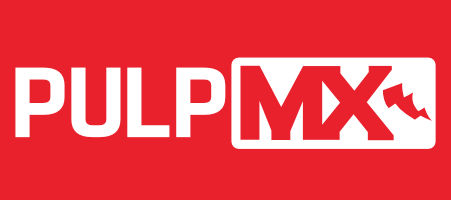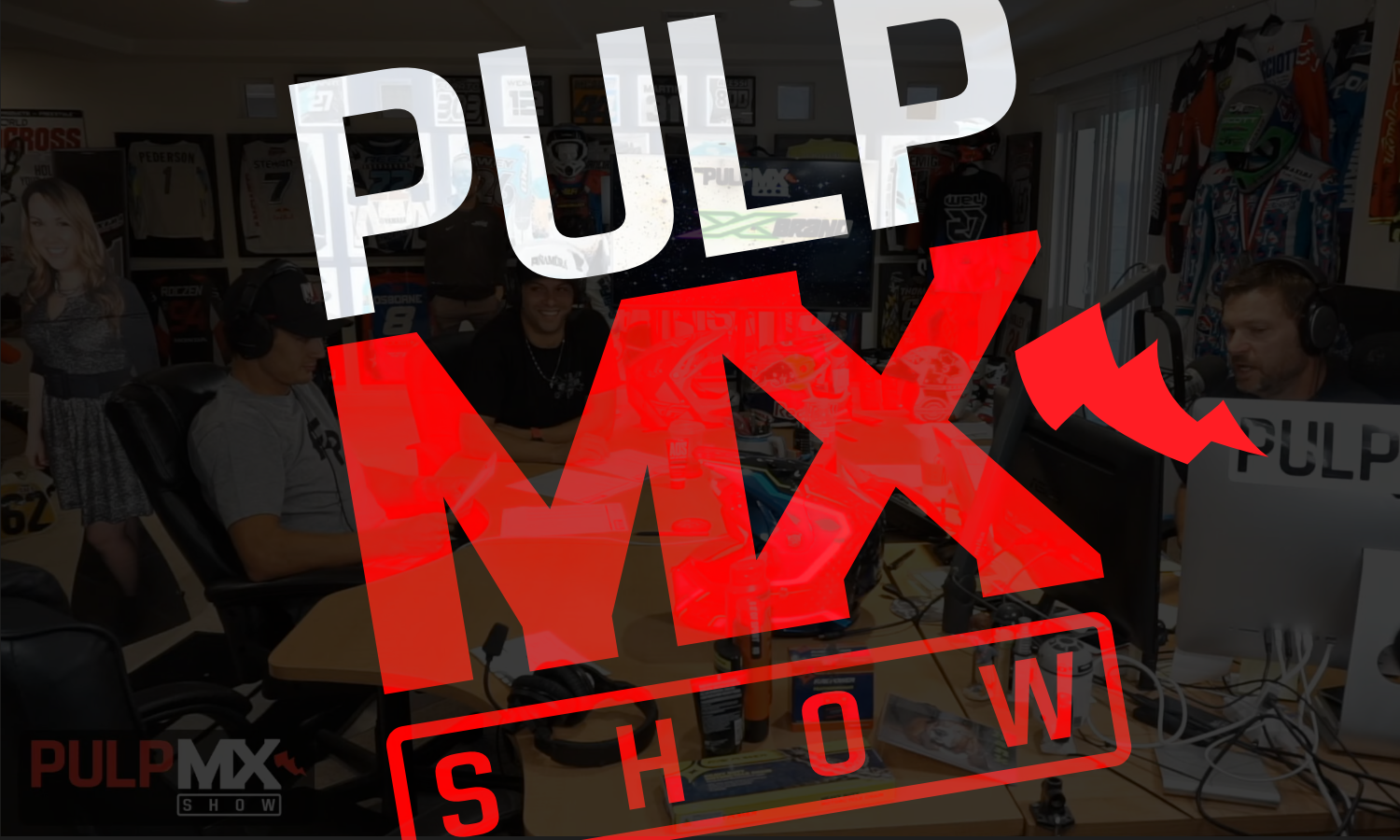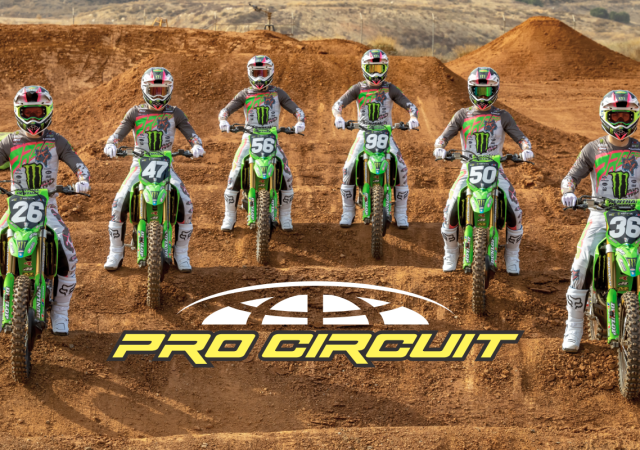
For this edition of Classic Ink, we are going to take a look back at a few of Honda’s iconic “win ads” from the 1980s.
In the days before websites and social media, the win ad was the main avenue for manufacturers to tout their victories to prospective customers “Win on Sunday, sell on Monday” was the prevailing wisdom, and placing an ad in Cycle News was the quickest way to get the word out in an analog world. Sometimes the ads were funny, often they were punny, but they were always a slice in time that let you know the big moves and serious players in the sport at the time. Here are a few of the more memorable ones from Big Red during the decade that saw them take a dominant position in the sport here in the US.
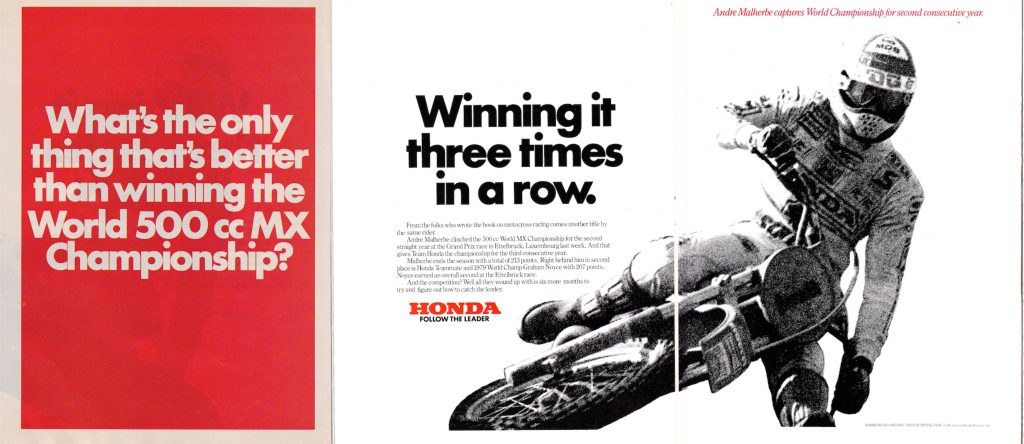 Today, the European Grand Prix races are largely off the radar of many American motocross fans but in the seventies and early eighties the 500 GPs were the preeminent racing series in the world. In 1981, Andre Malherbe’s second consecutive 500 title and Honda’s third straight championship would have been big news followed by the fans and press alike in America.
Today, the European Grand Prix races are largely off the radar of many American motocross fans but in the seventies and early eighties the 500 GPs were the preeminent racing series in the world. In 1981, Andre Malherbe’s second consecutive 500 title and Honda’s third straight championship would have been big news followed by the fans and press alike in America.
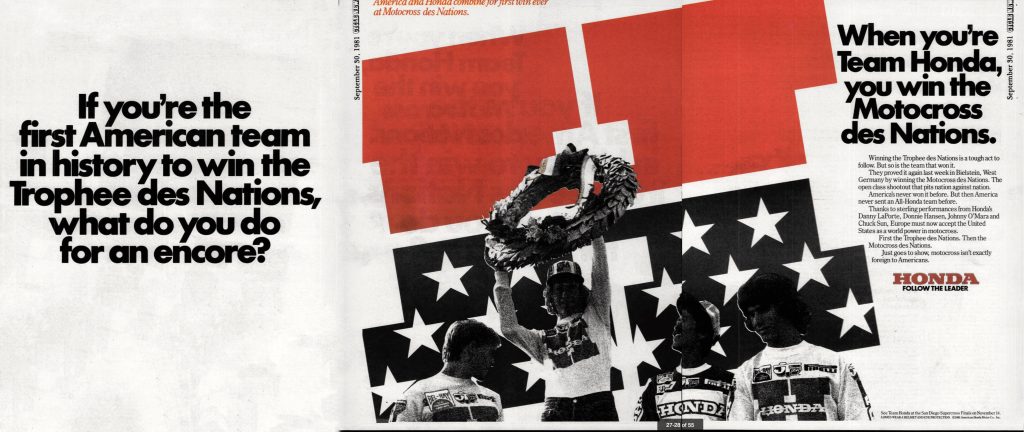
In September of 1981, Team USA pulled off one of the most stunning upsets in motocross history by sweeping the Trophee (250) and Motocross (500) des Nations in back-to-back weeks. At the time, the US team had never won either event, and much of the US interest in the events had waned. This year, we almost did not send a team until a grassroots effort led by MXA publisher Dick Miller prompted newly retired Honda advisor Roger De Coster to volunteer his entire team of young racers to represent the USA. Donny Hansen, Chuck Sun, Danny LaPorte, and Johnny O’Mara shocked the world with their factory Honda’s sweeping both the 250 and 500 events (the separate 250 and 500 events would be folded into one Motocross des Nations championship in 1985) in consecutive weekends to deliver the red, white, and blue its first World Team Championships. After the 1981 victory, Team USA would go on an unprecedented run of thirteen consecutive MXdN wins, before finally being upset by the UK team in 1994.

After his remarkable victory at the Motocross des Nations in 1981, Honda’s Donny Hansen broke through to become one of the sport’s biggest stars in 1982. Hansen would pilot his RC250 to victories indoors and out taking the 1982 Supercross and 250 Outdoor titles for Honda. Tragically, Hansen would never get to defend his titles as a crash in Germany while preparing for the 1982 MXdN would leave him with severe brain trauma effectively ending his promising motocross career.
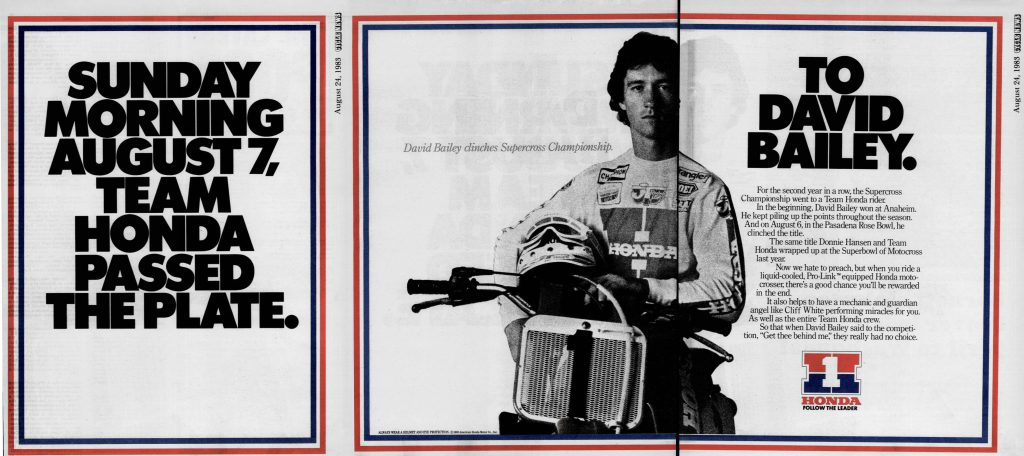
After the tragic injury to Donnie Hansen, both the 250 Supercross and 250 outdoor titles were up for grabs and this time it was another journeyman racer who took the crowns for Honda. Like Hansen, David Bailey had been on the circuit for several years before the move to Factory Honda catapulted his career into superstardom. Bailey enjoyed an incredible season on the red machines, taking home the 250 Supercross, 250 Motocross, Grand National Motocross, Trophee, and Motocross des Nations titles.
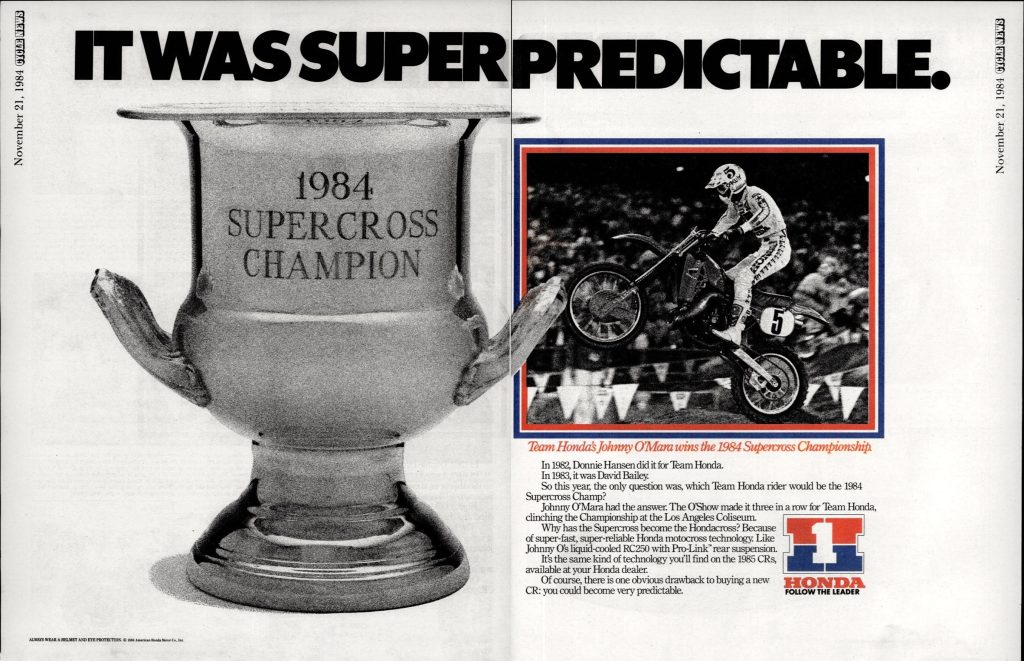
In 1984, reigning 125 National Motocross champion Johnny O’Mara became the third consecutive Honda rider to capture the AMA Supercross crown in a series that kicked off in January and did not end until mid-November!
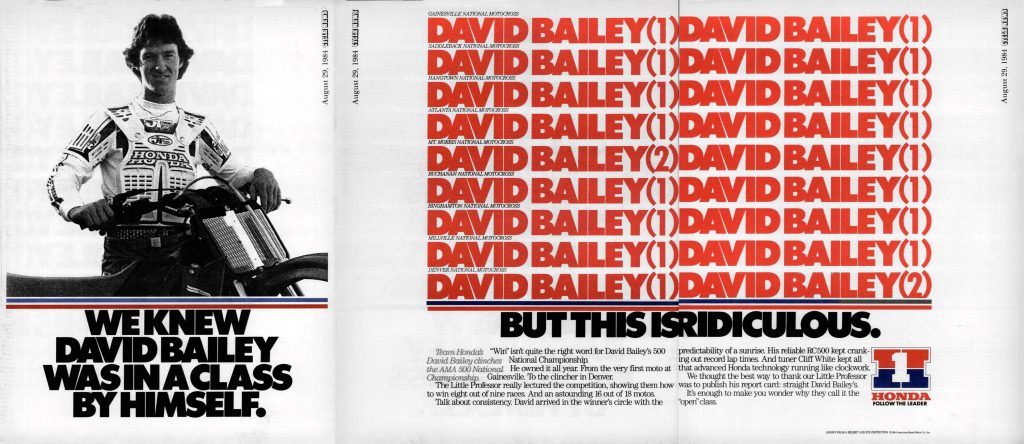
After a clean sweep of 250 racing in 1983, David Bailey moved to the 500 class and dominated his way to the 1984 500 National Motocross title.
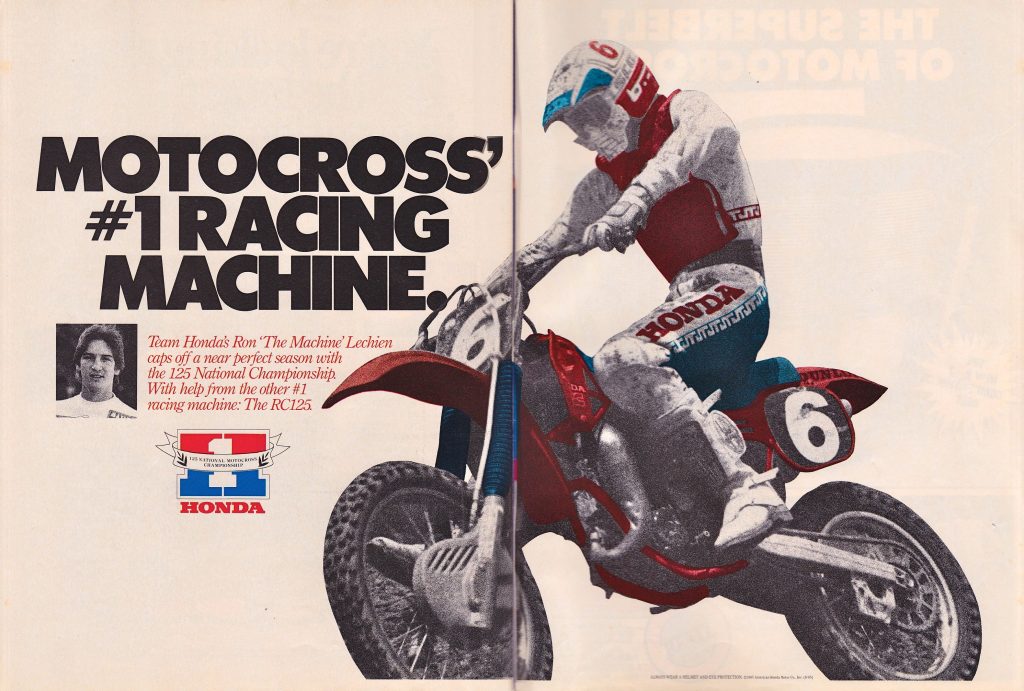 The 1985 season was a bit of an off year for Big Red with Jeff Ward taking the 250 Supercross crown for Kawasaki and Broc Glover upsetting David Bailey for the 500 crown on his air-cooled YZ490. In the end, it was up to Ron Lechien to uphold Honda’s honor by taking his uber-trick RC125 to the 1985 125 National Motocross title.
The 1985 season was a bit of an off year for Big Red with Jeff Ward taking the 250 Supercross crown for Kawasaki and Broc Glover upsetting David Bailey for the 500 crown on his air-cooled YZ490. In the end, it was up to Ron Lechien to uphold Honda’s honor by taking his uber-trick RC125 to the 1985 125 National Motocross title.
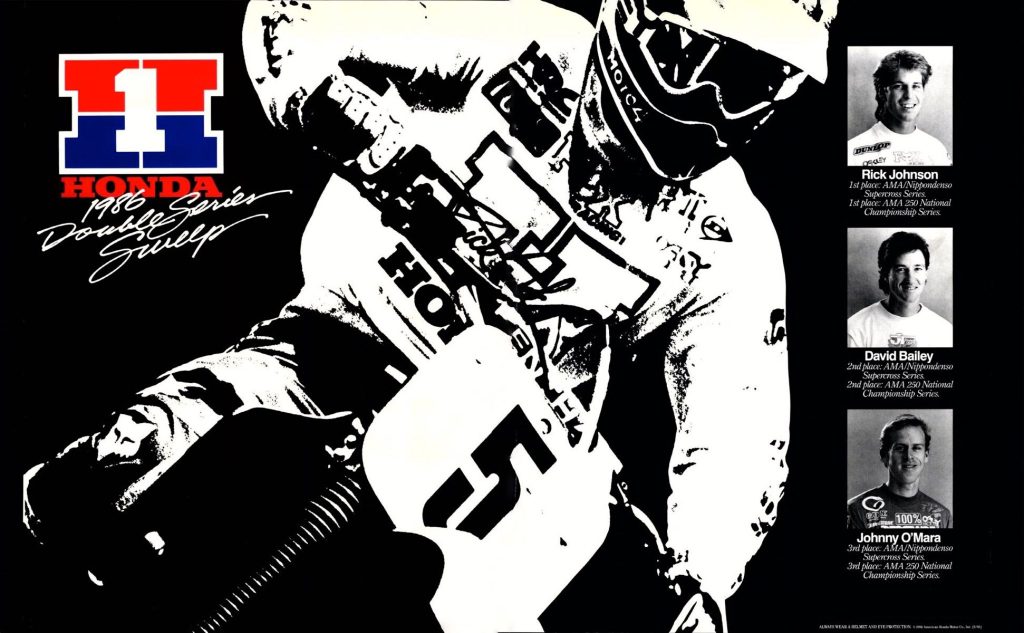
After a somewhat mediocre 1985 season, Big Red came roaring back in 1986 with one of the most dominant motocross seasons in AMA history. Big Red snatched Rick Johnson away from Yamaha and he led an all-Honda sweep of both 250 titles. When you added in Micky Dymond’s surprising 125 National Motocross victory, David Bailey claiming the 500 title, and an RJ, Bailey, and O’Mara sweep at the Motocross des Nations, it was one incredible season to be riding red.
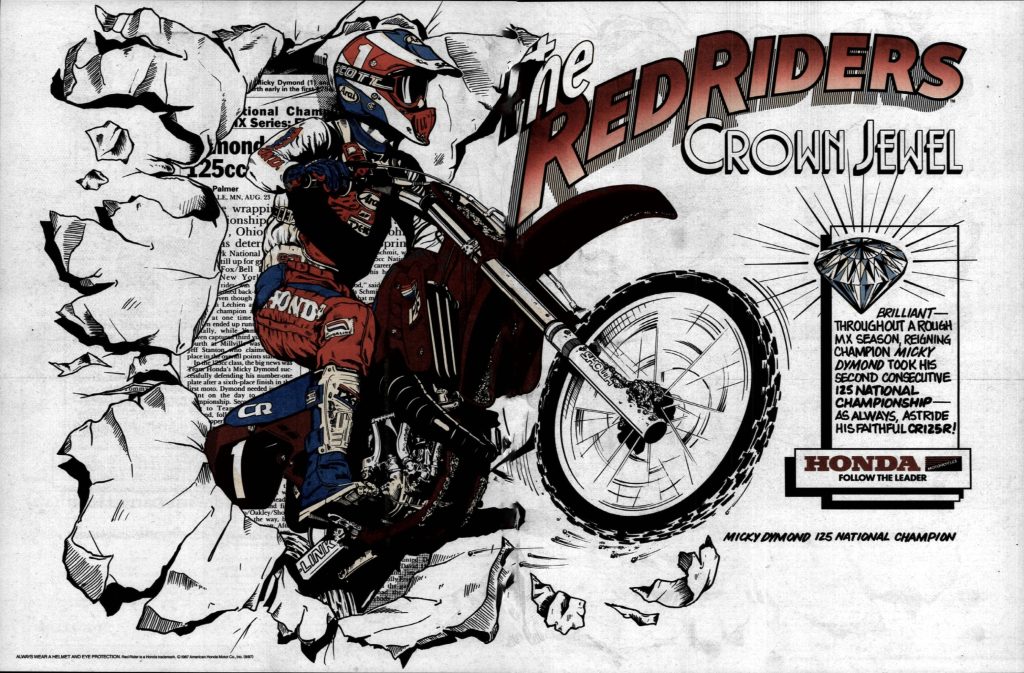 After taking the 125 class by storm in 1986, Micky Dymond was back out front in 1987 on the all-new CR125R. Micky would capture five overall victories on his way to delivering Honda its third 125 straight 125 National Motocross title.
After taking the 125 class by storm in 1986, Micky Dymond was back out front in 1987 on the all-new CR125R. Micky would capture five overall victories on his way to delivering Honda its third 125 straight 125 National Motocross title.
 A tragic crash by Honda star David Bailey before the season ended any chance of another Big Red sweep in 1987. Bailey’s career-ending crash at Lake Huron left the industry in shock as he was widely considered to be one of the most talented and precise riders in the sport. With Bailey’s injury and the departure of Johnny O’Mara to team Suzuki, it was left to Rick Johnson to uphold Honda’s honor in ’87. A crash and resulting DNF at Anaheim would derail Johnson’s Supercross title defense, but he would come roaring back outdoors bringing Honda another pair of motocross titles in the 250 and 500 divisions.
A tragic crash by Honda star David Bailey before the season ended any chance of another Big Red sweep in 1987. Bailey’s career-ending crash at Lake Huron left the industry in shock as he was widely considered to be one of the most talented and precise riders in the sport. With Bailey’s injury and the departure of Johnny O’Mara to team Suzuki, it was left to Rick Johnson to uphold Honda’s honor in ’87. A crash and resulting DNF at Anaheim would derail Johnson’s Supercross title defense, but he would come roaring back outdoors bringing Honda another pair of motocross titles in the 250 and 500 divisions.
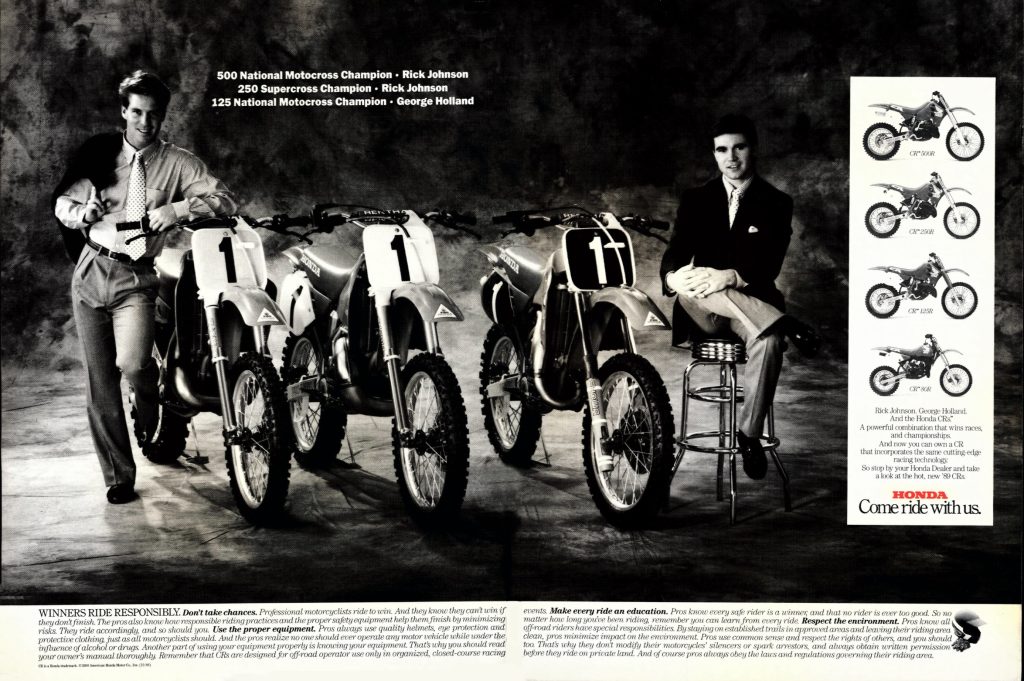
After his back-to-back 125 titles, Micky Dymond would make the jump to Yamaha for the 1988 season. Filling his spot would be perennial 125 contender and Suzuki mainstay George Holland. After the move to Honda, the world’s fastest almond farmer would not miss a beat delivering Honda its fourth consecutive 125 National Motocross title. On the big bikes, Honda superstar Rick Johnson would swap titles with Jeff Ward and take the 250 Supercross title back from Kawasaki. Outdoors, a DNF at Hangtown would spell doom for RJ’s 250 title defense, but he would get revenge on the 500s capturing his second consecutive Open bike crown.
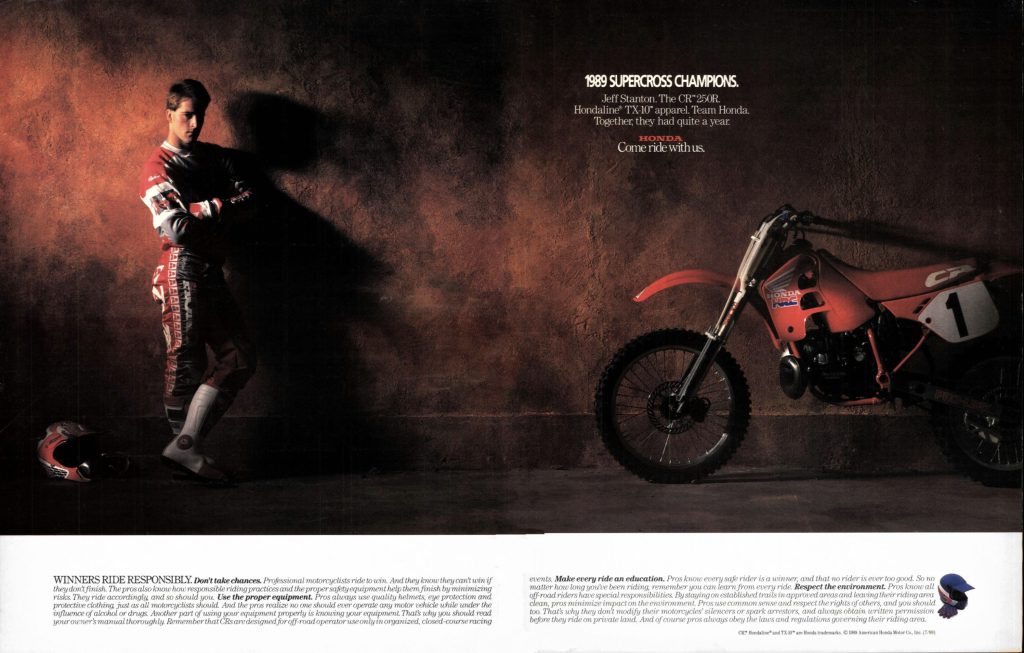 As with any sport, luck, and injuries play a major role in the outcome. A fluke thing like a loose water spigot or mistimed foot dab can often be the difference between taking home the glory or taking it on the chin. At the start of the 1989 Supercross season, it looked to everyone like the sport was in store for a runaway of epic proportions. Fresh off another double-title season, Rick Johnson was untouchable on his CR250R. Victories in the first five events pointed to an athlete at the peak of his powers. A second place at round six after an uncharacteristic fall only reinforced the near certainty of a third Supercross crown. As fate would have it, however, the motocross gods would intervene at round one of the Motocross championship and throw both series into uncertainty. A crash in practice with Danny Storbeck would leave Johnson with a badly broken wrist and no shot at recapturing either 250 title.
As with any sport, luck, and injuries play a major role in the outcome. A fluke thing like a loose water spigot or mistimed foot dab can often be the difference between taking home the glory or taking it on the chin. At the start of the 1989 Supercross season, it looked to everyone like the sport was in store for a runaway of epic proportions. Fresh off another double-title season, Rick Johnson was untouchable on his CR250R. Victories in the first five events pointed to an athlete at the peak of his powers. A second place at round six after an uncharacteristic fall only reinforced the near certainty of a third Supercross crown. As fate would have it, however, the motocross gods would intervene at round one of the Motocross championship and throw both series into uncertainty. A crash in practice with Danny Storbeck would leave Johnson with a badly broken wrist and no shot at recapturing either 250 title.
Stepping in to fill that void would be another journeyman racer, newly hired Johnson protégé Jeff Stanton. Stanton had shown a few flashes outdoors on his YZ490, but very few pit pundits had him pegged as a future champion of the sport. His bulldog style often looked labored, and most experts thought of him as a solid if unspectacular wingman to Johnson’s flash. After the exit of Johnson, however, an all-new Stanton took center stage. The off-season of training with RJ seemed to awaken some of Stanton’s untapped potential and he would proceed to take hold of the Supercross series in Johnson’s absence. Stanton would eventually claim five victories on his way to the 1989 Supercross title and back that up with an equally impressive showing in the 250 Motocross campaign.
